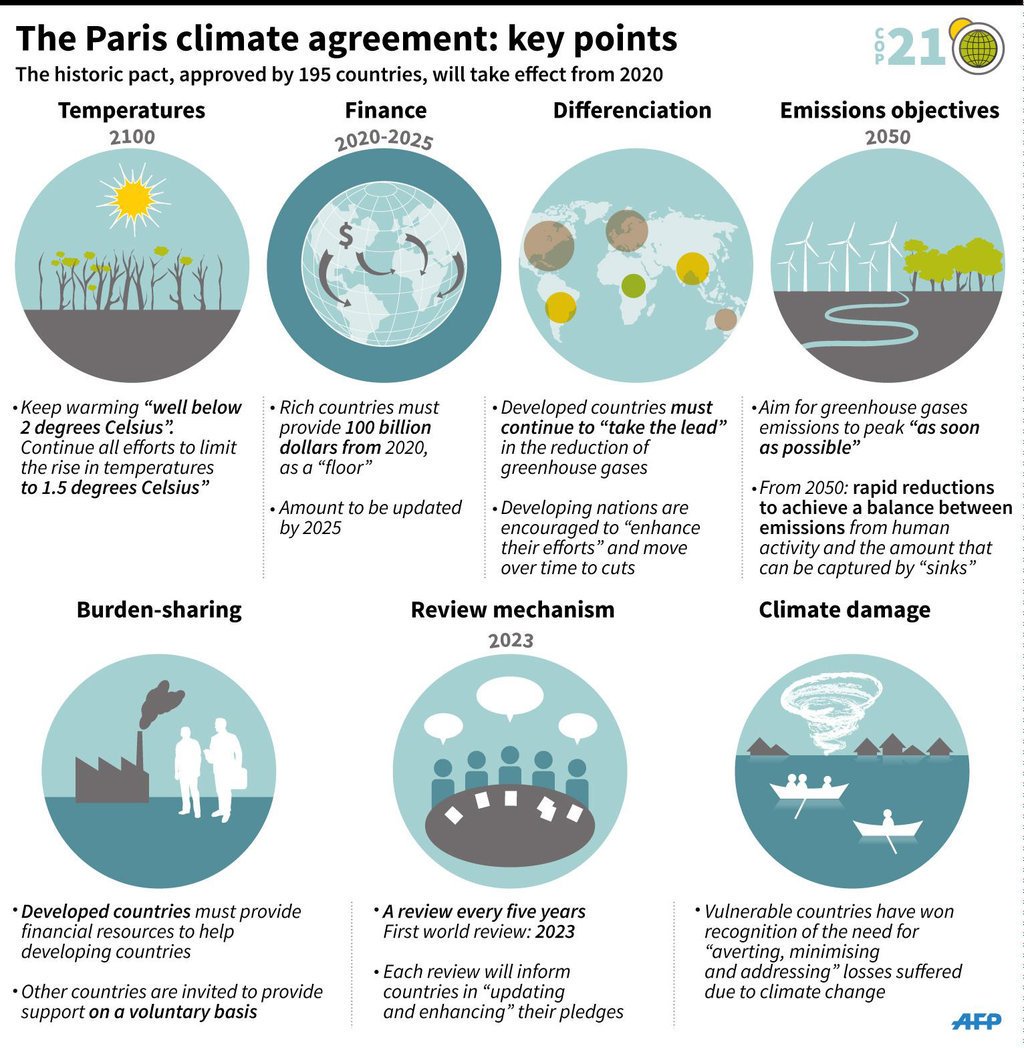
Daily Archives: December 13, 2015
What The Paris Agreement Does, and Doesn’t Do
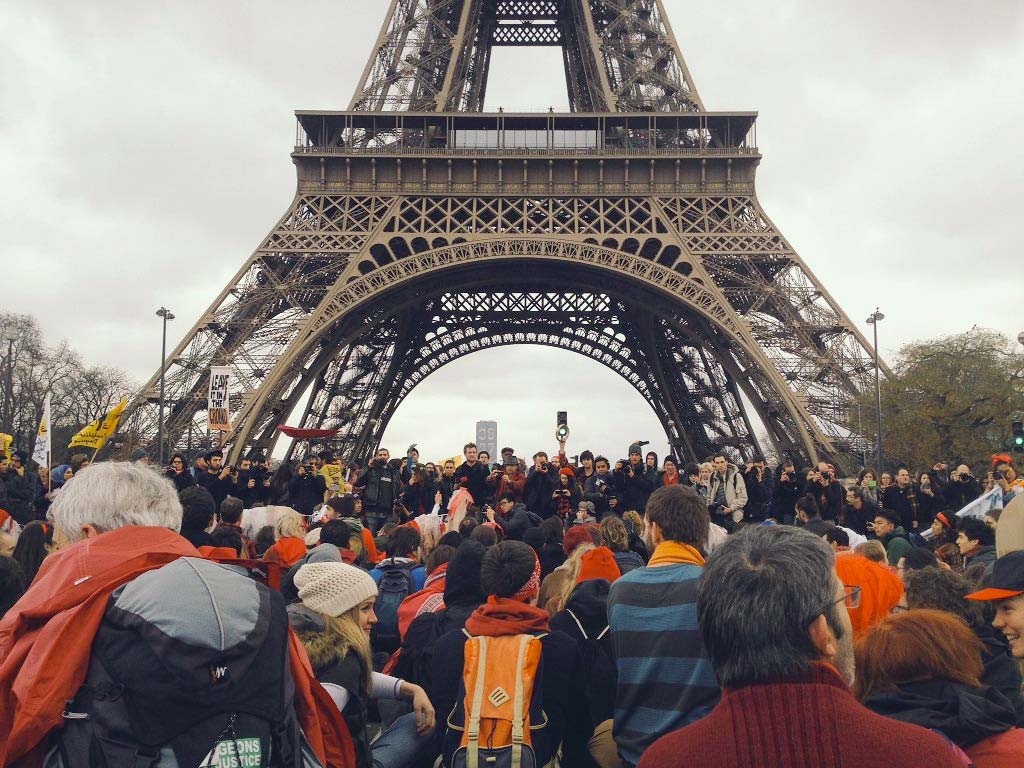
By May Boeve, reposted from 350.org, Dec 12, 2015
Some people are relaxing after organizing a really powerful redlines action
Some people are still trying to figure out what this climate agreement will really get us.
Some people are gearing up to keep on fighting. Because that’s what we need.
Here’s a rough (unofficial) overview of some different parts of the agreement:
– Temperature Goal: One of the biggest battles at COP21 has been the goal of how much we let our planet heat up. Vulnerable countries fought hard for the goal of 1.5°C — one that’s more in line with justice and science. This wasn’t even on the table to begin with. It’s now in the agreement (well sort of), and even a recognition of it is great. Much is owed to island nations and climate justice groups
Here’s what the text does say:
“Holding the increase in the global average temperature to well below 2 °C above pre-industrial levels and to pursue efforts to limit the temperature increase to 1.5 °C above pre-industrial levels, recognizing that this would significantly reduce the risks and impacts of climate change.”
2°C will be the binding part though, so getting countries to really aim for 1.5°C will require a lot of pressure in the years to come. If we aim for 1.5°C it means nations get to stay above water. It means more communities are protected. It means more people get to survive. Read more about 1.5°C and what that means here.
Whether it’s 2 or 1.5C – what’s clear is we have to move to get off of fossil fuels fast.
– Indigenous Rights, human rights, women’s rights: Have been moved to sections of the text where they aren’t legally protected or operationalized. Read a joint response from indigenous groups about the talks.
– Pledges to Cut Emissions: This is stuff we already knew coming into the talks. Countries submitted before-hand their plans to curb or cut emissions, and it will only limit temperature increase by (around) 2.7 – 3.7°C. That’s down from the 5°C or so represented from business as usual. Progress, but not nearly enough to result in a livable climate. There’s a huge amount of work to be done.
– Setting the long term goal to get off fossil fuels: What we wanted was a clear timeline for when we transition off of fossil fuels. We and others pushed hard to make 2050 the goal for when the world would be 100% off of fossil fuels.
The final text created something that at first glance inserted some weird things:
“Parties aim to reach global peaking of greenhouse gas emissions as soon as possible, recognizing that peaking will take longer for developing country Parties, and to undertake rapid reductions thereafter in accordance with best available science, so as to achieve a balance between anthropogenic emissions by sources and removals by sinks of greenhouse gases in the second half of this century.”
People are still figuring out what “a balance between anthropogenic emissions by sources and removals by sinks of greenhouse gases” actually means. But the quick take is it’s actually pretty good. Experts are saying it means getting to “net zero emissions” between 2050 and 2100 – which is a good goal to reach for. If we reduce CO2 emissions to net zero between 2055-2070, and all GHGs by 2080-2100, then supposedly we have a chance of keeping global warming below 2°C (staying below 1.5°C or getting back there quickly would require bolder action). Either way, the message should be clear: time to throw the fossil fuel industry’s business plan out the window.
– 5 year review mechanism: We won’t always have Paris. One of the good things about this agreement is the 5 year review mechanism. Right now the contributions from each country will not bring us a safe world, not even close. But now this agreement would “force countries to come back to the table every five years to review their emissions reduction targets and make new, more ambitious cuts.”
This is often known as the ‘ratchet mechanism’ and could push countries to keep on stepping up. It’s one thing that could help cut the gap between policy and science. Countries have been asked to start reviewing their pledges in 2018 so that new commitments could be ready to go by 2020.
– Supporting most vulnerable: Will the nations most impacted by climate change get the support they need? Not nearly enough.
“Ethiopian activist Azeb Girmai, speaking for LDC Watch, which keeps an eye on the least developed countries in Africa and elsewhere, described it as “the saddest day for all the poor people in the world facing loss and damage day-in and day-out” while their representatives in Paris were “bullied” by rich countries.” read more
Also good to follow @AsianPeoplesMvt on Twitter for some good response.
– Holding countries accountable: What will happen if countries don’t fulfill their promises and pledges? Well nothing really. There are no review mechanisms if countries do not comply.
5 key points in Paris Agreement on climate change
Limiting temperature rise to 2 C, helping poorer nations part of historic pact
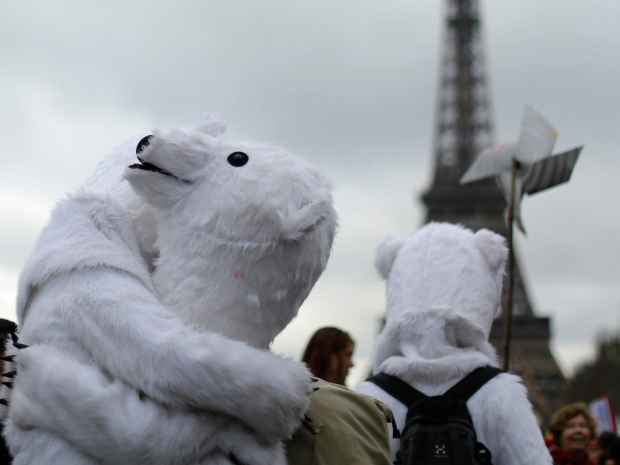
By Haydn Watters, reposted from CBC News, Dec 12, 2015
After lengthy overnight negotiations and two weeks of touch-and-go discussions, delegates at the UN climate talks in Paris have adopted a climate-change pact.
The final text of the Paris Agreement — considered to be the world’s first universal climate agreement — is 31 pages long. While the plenary session agreed upon the final draft Saturday afternoon, it now must be ratified.
Here are five of the agreement’s key points.
1. Limit temperature rise ‘well below’ 2 C
The agreement includes a commitment to keep the rise in global temperatures “well below” 2 C compared to pre-industrial times, while striving to limit them even more, to 1.5 degrees.
Canadian officials agreed to this lower amount earlier this week, saying they would support a long-term goal of limiting rising average temperatures to within 1.5 C of pre-industrial levels.
Scientists consider 2 C the threshold to limit potentially catastrophic climate change.
2. First universal climate agreement
It’s the world’s first comprehensive climate agreement, with all countries expected to pitch in.
The previous emissions treaty, the 1997 Kyoto Protocol, only included rich countries. Canada signed on to Kyoto, but later backed out in 2011.
French Foreign Minister Laurent Fabius presented the agreement’s final draft on Saturday, noting that it is legally binding.

3. Helping poorer nations
The deal also calls on developed nations to give $100 billion annually to developing countries by 2020. This would help these poorer countries combat climate change and foster greener economies.
The agreement promotes universal access to sustainable energy in developing countries, particularly in Africa. It says this can be accomplished through greater use of renewable energy.
In his appearance at the summit last week, Prime Minister Justin Trudeau committed to helping poorer nations cope with global warming.
In November, the Canadian government promised to spend $2.65 billion over five years to help developing countries reduce their emissions and adapt to climate change.
4. Publishing greenhouse gas reduction targets
Countries will be tasked with preparing, maintaining and publishing their own greenhouse gas reduction targets. The agreement says these targets should be greater than the current ones and “reflect [the] highest possible amibition.”
These targets will be reviewed and revised every five years starting in 2023.
The agreement also says that each country should strive to drive down their carbon output “as soon as possible.”
5. Carbon neutral by 2050?
The deal sets the goal of a carbon-neutral world sometime after 2050 but before 2100.
This means a commitment to limiting the amount of greenhouse gases emitted by human activity to the levels that trees, soil and oceans can absorb naturally.
Scientists believe the world will have to stop emitting greenhouse gases altogether in the next half-century in order to achieve this goal.
With files from The Associated Press and Reuters
RELATED:
Here’s How We Deliver on Paris Agreement Goals
Climate change “met its match in the will of a united world”
Paris climate accord marks shift toward low-carbon economy
Historic climate accord approved by nearly 200 countries
Paris Climate Agreement Explained: How we’ll deliver on the promise of ambitious climate action

By Susan Casey-Lefkowitz, Director of Programs, reposted from NRDC, Dec 12, 2015
The global community signed an historic agreement today at the Paris climate talks to tackle the threat of climate change and accelerate the shift to clean energy around the world. This is a momentous breakthrough. Nearly 200 countries have pledged to reduce their climate change pollution, strengthen their climate commitments every five years, protect people living on the front lines of climate impacts, and help developing nations expand their clean energy economies.
Most important, this agreement sets ambitious goals. It calls for holding global temperature rise to 1.5 degrees Celsius, with a first step of keeping us at no more than 2 degrees of warming.
Reaching the 2-degree target is essential to prevent catastrophic climate impacts, but scientists say it still leaves us open to dangerous levels of rising seas, food insecurity, and extreme drought. It would make the Marshall Islands and other island nations uninhabitable and expose countless vulnerable communities to deadly harm. Keeping the temperature rise at no more than 1.5 degrees will sustain these communities and create a brighter, more stable future for our children and grandchildren.
This is an ambitious goal, but the past two weeks in Paris confirm it is achievable.
In Paris, an action agenda emerged out of a groundswell of climate action from cities, regions, businesses, investors, trade unions, and many others. Mayors and governors described what they are already doing to reduce carbon pollution and how they plan to do more. Multinational corporations said they are cutting carbon pollution across their operations. Financial institutions reported that renewable energy is a better investment than fossil fuels. Leaders from developing nations explained that clean energy is helping to generate economic growth and bring people out of poverty. And thousands of people from all over the world stood up for climate action. This groundswell has the backs of our national leaders in implementing ambitious climate policies. This is what climate leadership looks like.
The low-carbon transition is already underway. Now the Paris agreement calls on us to return home, pick up the pace, and go faster into the clean energy future. And it gives us the tools to hold our government leaders accountable.
In China, that means building on the country’s commitment to implement a cap-and-trade program and increase non-fossil-fuel energy sources to 20 percent of total energy by 2030. In India, that means leapfrogging over dirty fossil fuels and using clean, renewable, and efficient energy to power its growth. Meeting the country’s solar mission alone will create 1 million jobs. India has already vowed to increase renewable energy sixfold by 2020 and to set mandatory efficiency standards for buildings by 2017.
The United States can also build on existing progress. All 50 states are on track to implement the Clean Power Plan for limiting carbon pollution from power plants; they need to focus on doing this through energy efficiency and an increase in wind and solar. We can continue to improve fuel efficiency standards and move to a combination of electric vehicles and smarter growth in transportation. Next up, we’ll work on getting existing oil and gas facilities to reduce their methane emissions and on the phase-out of fossil fuel development on federal lands and in federal waters. And U.S. businesses should continue not only to improve their own energy efficiency but to band together to advocate for stronger clean energy and climate policies.
This work won’t be easy. The Paris agreement - and our obligation to future generations - demands that nations transform how we think about electricity, transportation, industry, methane from fracking, HFCs from air conditioning, agriculture, and other contributors to climate change. It also requires helping developing countries face the challenges of poverty alleviation, energy equity, and climate justice. And here in the United States, it entails going up against entrenched fossil fuel interests and those politicians who persist in denying climate change.
These are significant hurdles, but citizens, businesses, and political leaders around the globe have made it clear that we support strong climate action. This momentum will carry us forward. And the Paris climate agreement and action agenda will provide the road map.
Irina Bokova, the director-general of UNESCO, said at an NRDC event last week, “When we speak about climate, we speak about humanity.” Our future is at stake here. For the human community to thrive, we need a stable climate. The Paris agreement and commitments will help ensure that our families, nations, and societies can flourish for generations to come.
Written with Emily Cousins
Nature’s Trust: Environmental Law for a New Ecological Age
reposted from YouTube, May 26, 2015
In face of global ecological crisis and accelerating climate change, what can ordinary citizens do? Wood urges a revolutionary legal approach to hold governments accountable for protecting the planet’s climate system. Based on the fundamental public trust doctrine, “Atmospheric Trust Litigation” seeks to fulfill our moral obligation to the beneficiaries of the public trust – today’s youth and tomorrow’s citizens. (More information at: https://ourchildrenstrust.org/)
Environmental law has failed us all. As ecosystems collapse across the globe and the climate crisis intensifies, environmental agencies worldwide use their authority to permit the very harm that they are supposed to prevent. Growing numbers of citizens now realize they must act before it is too late.
Mary Christina Wood is the Philip H. Knight Professor of Law and Faculty Director of the school’s Environmental and Natural Resources Law Program at UO and the author of Nature’s Trust: Environmental Law for a New Ecological Age.
This event was sponsored by the League of Women Voters of Corvallis, the Spring Creek Project for Ideas, Nature, and the Written Word, the School of History, Philosophy, and Religion at Oregon State University, 350 Eugene, the Pacific Green Party, the Corvallis Environmental Center, the Corvallis Citizens Climate Lobby, FUMC Natural Step Ministry, Corvallis Move to Amend, and the Community for Earth Social Justice Committee of the First Unitarian Church of Portland. SOURCE
Activists Promise Civil Disobedience In Face Of Failed Paris Climate Compact
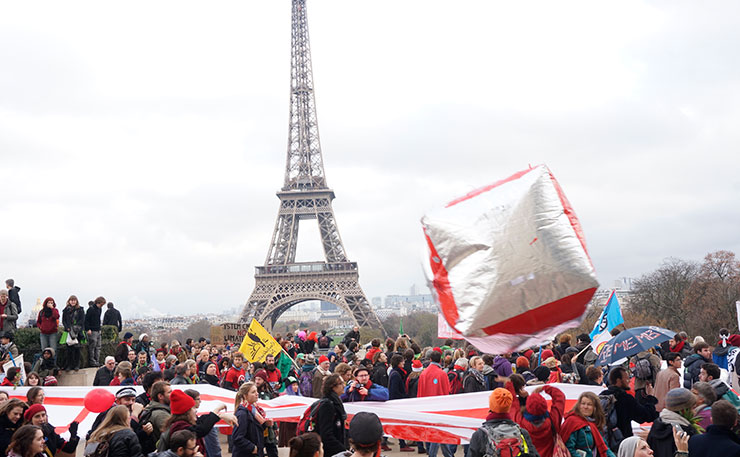
By Thom Mitchell reposted from NewMatilda.com on
The new climate framework that’s been negotiated in Paris relies on ambition at the national level, and a burgeoning civil disobedience movement is planning to push for it on a global level. Thom Mitchell reports from Paris.
Activists have drawn a ‘red line’ under a new global climate regime decided in Paris overnight, arguing it’s a compact inked in the interests of big polluters, rich countries, and without regard for scientific reality.
Crowds approaching 10,000 defied a French ban on political gatherings to march from the Arc de Triomphe to the Eiffel Tower, in a prelude to a campaign of civil disobedience which they say will continue until concrete steps are taken to solve the climate crisis.
Negotiators who’ve spent the last two weeks at a sprawling 18-hectare conference centre at Le Bourget, on Paris’ outer fringe, claimed on Saturday that they had cleared the way for a clean energy future free of fossil fuels.
They received qualified but enthusiastic support from major environmental groups, which framed it as a good deal, and the best that could realistically have been hoped for in the context of international negotiations involving nearly 200 countries.
But Naomi Klein, a Canadian activist, author, and board member of climate advocacy group 350.org, echoed the sentiments of thousands assembled in the shadow of the Eiffel tower when she told them the “agreement, as we knew it would, puts us on a course towards disastrous levels of warming”.
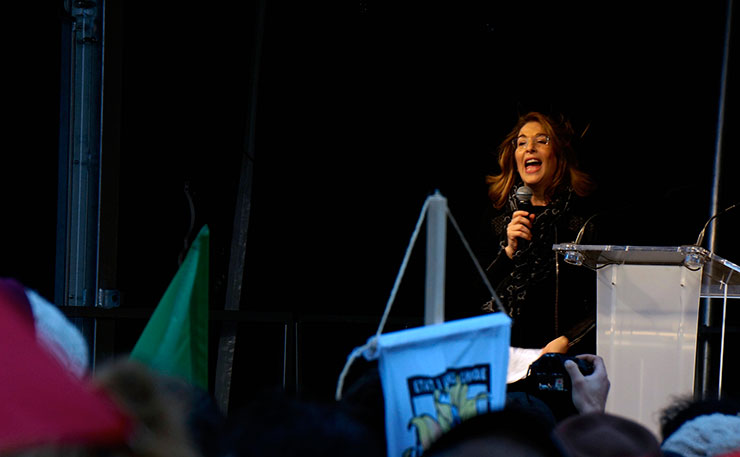
“We heard our leaders say many of the right things over the last two weeks in beautiful speeches,” Klein said, “and yet despite their words, they remain trapped in a broken system and a crashing worldview based on dominance of people and the planet”.
“That world view simply does not allow them to align their words with their actions. And so the gap is immense between the rhetoric and the goal of safety, and the reality of the epic danger they are allowing to unfold.”
Earlier, as demonstrators occupied a bridge leading up to the famous French monument, one organiser had declared the text “a big f*ck you from Le Bourget”. “We say f*ck you too,” he said, to rapturous applause from the crowd.
As it became clear in the afternoon what the final form of the text would be, another organiser noted “they have dropped any reference [in the main text]to human rights, to Indigenous rights; they have locked us in to a three degree world”.
Demonstrators had endorsed calls for a lower threshold for temperature rise of limiting warming to 1.5 degrees, chanting the call for “1.5 to stay alive” which was issued most strongly at the conference by Pacific Island leaders and other climate-vulnerable nations.
Protestor Gwendolyn Grey told New Matilda that the three degree temperature rise which current national commitments would add up to is a clear failure.
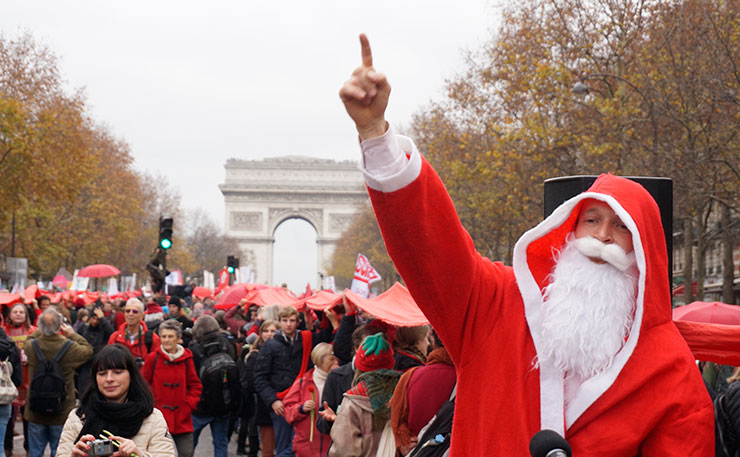
“For me it’s like, just set your house on fire and get ahead of the game,” the seasoned Canadian climate campaigner said.
“If you’re young, you don’t realise a decade is like nothing,” she said. “It’s like the snap of a finger. It’s like having ten dollars. It’s not much money, and it’s not much time. We’re on borrowed time, and it behooves us to start acting now like all the people here today.”
Another activist, Sam Castro, from Australia, said “people are understandably angry”. “This is our future and there’s no more time to mess around with this,” she said. “This falls back on the leaders of the world which have been unable to reach an agreement which is actually stop our Pacific brothers and sisters from drowning.
“It’s their fault that we’re all out on the streets. So if it’s an inconvenience, we’re sorry, but the people are pretty determined to express themselves.”
The deal which was done in Paris sets out a pathway towards closing the gap between the two degree target, and the at least 2.7 degrees current plans would lock in, and it includes an aspirational reference to staying below 1.5 degrees warming.
But the ‘bottom-up’ approach the United Nations process took, asking individual nations submit increasingly ambitious climate change plans over time, offers no concrete assurance that these targets will be met.
The plans that countries do put forward are not legally binding in terms of their implementation, but environmental campaigners elsewhere have welcomed the “balanced” plan which includes periodic reviews that will “inform” governments with a view to “updating and enhancing” their efforts.
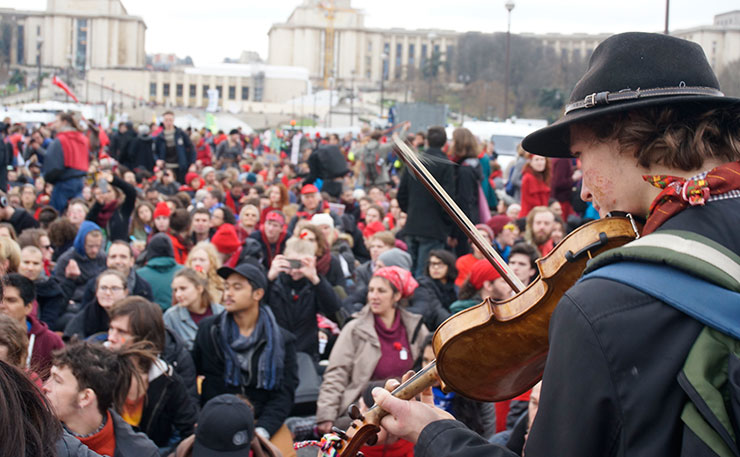
The activists who descended on the Eiffel Tower yesterday are determined to ensure that the large-scale expression of urgency they represent also informs national level policies.
“It even says it in the text itself,” Klein said. “What it says is ‘we note with concern’ that the commitments that governments have brought to not bring us to 2 degrees celsius, or 1.5 deg celsius.
“We note this as well, but not just with concern; we note this with alarm, and we say that our leaders have shown themselves willing to set our world on fire, and we will not let them,” she said.
“And that our mood today, here in front of the Eiffel Tower, earlier at the Red Lines event, is not one of despair but rather our mood is one of clarifying purpose and commitment.
“We knew that those were not the real leaders: We knew that the leaders were in the streets, that the leaders were in the fields, that this city is filled with climate heroes.”
“It’s our responsibility to keep [fossil fuels]in the ground” was one of the most common refrains of the demonstration, but there was also widespread concern that the climate regime which has been codified in Paris does not address many of the systematic root causes which gave rise to the climate crisis in the first place.
“System change, not climate change” has been an overarching message at political demonstrations in Paris during the course of the two-week climate negotiations. Yesterday, demonstrators diverted occasionally from climate-related chants, launching instead into refrains like “say it loud, say it clear, refugees are welcome here”.
Again, Klein captured the mood when she said “the gap is immense between the expressions of solidarity with the most vulnerable, and the reality of those leaders consistently putting the interests of the rich and the powerful before those interests of the vulnerable, and indeed all of humanity”.
“I did a search,” she said. “I did a word search on the final text, and the words ‘fossil fuels’ do not appear once in the text. What that means is that our leaders have none of the courage it takes to stand up to those corporate interests that are responsible for this crisis.
“They can’t even say the words. So it is up to us to do what they so clearly refuse to do, which is stand up to the polluters and make them pay, and we will do this everywhere, using every tool that we can,” she said.
“We will do it in the streets with protests like this, and we will do it in the face of every single polluting project that they decide to try to roll out.”
A major program of civil disobedience is planned to take place across 12 countries between May 7 and 13 next year, 350.org announced at the Paris climate summit. SOURCE
Naomi Klein: Climate Change Will Destroy These Countries
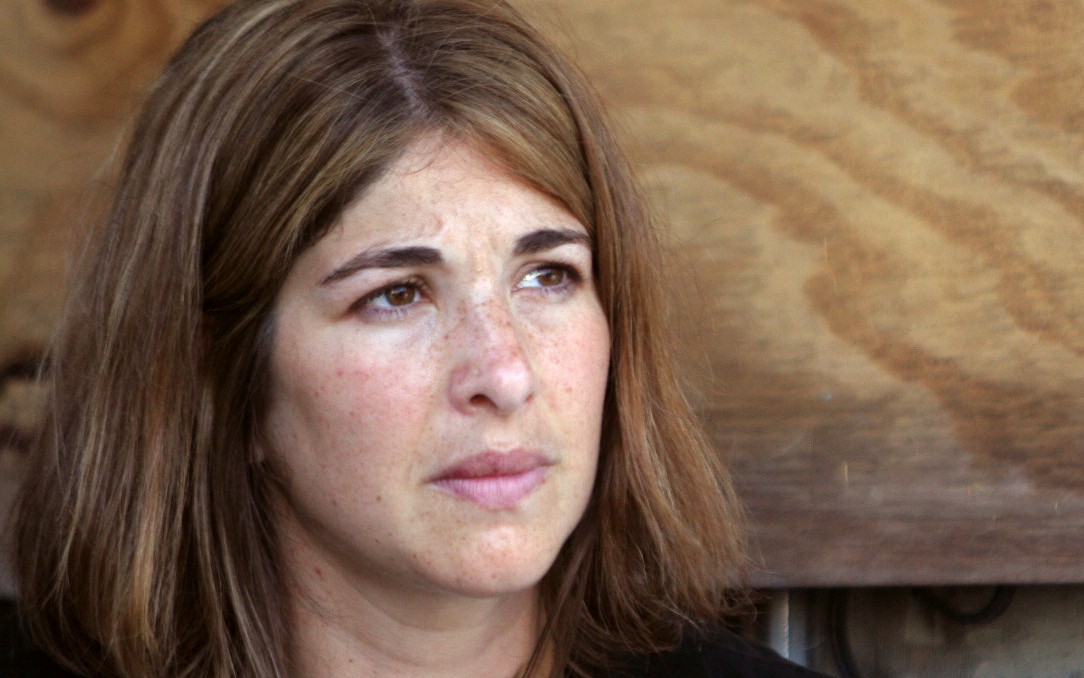
In Paris, vulnerable nations are being forced to accept unconscionable terms to stay in existence.
reposted from The Nation, Dec 12, 2015
For the planet’s most vulnerable countries, there were two main concerns going into the Paris climate summit. One was where the money will come to pay for the impacts climate change is already having on their countries. The second was to lower the international consensus on how much the global temperature could safely rise.
For vulnerable island nations, this second concern has been key: The internationally agreed upon rise of 2 degrees would essentially render their countries uninhabitable. So, much of the discussions in Paris have been about forcing concessions from these desperate countries. As Naomi Klein says in this video dispatch, “I don’t think I’ve ever seen a situation where countries are being negotiated to accept the terms of their own annihilation.” SOURCE
